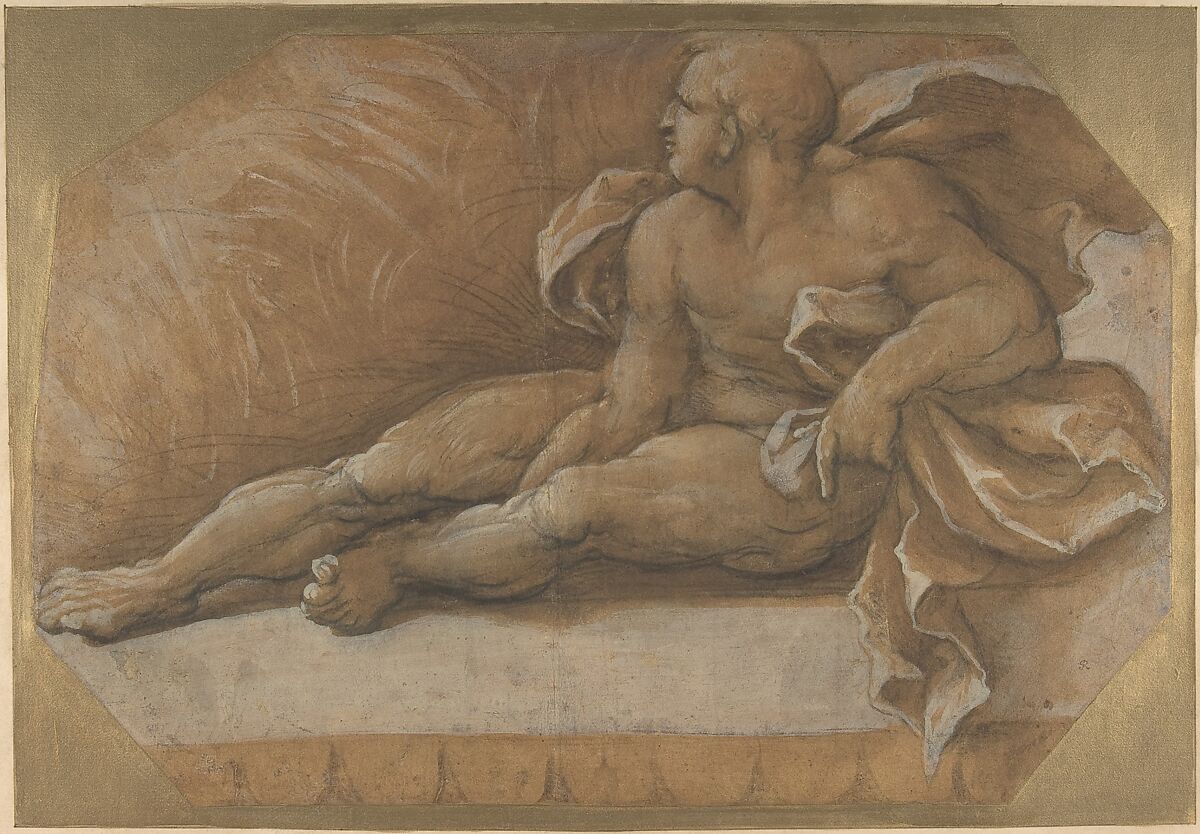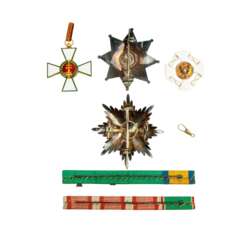order of the crown of italy

Amico Aspertini was an Italian Renaissance painter, draughtsman, and sculptor, considered one of the leading representatives of the Bolognese school of painting.
He was trained in the family workshop and was influenced by the artists of the Ferrara school, Ercole de'Roberti, Lorenzo Costa, and Francesco Francia. He worked as a painter and sculptor, and was also an excellent draughtsman, as evidenced by his many surviving drawings and sketches. Contemporaries marveled at his complex and impulsive character and noted that he worked with both hands simultaneously.
Aspertini painted splendid portraits as well as numerous frescoes and altarpiece paintings in chapels and churches in Italy. Many of his works are eccentric and eclectic, even whimsically fantastical, his complex style anticipating Mannerism.



Girolamo Fabrici d'Acquapendente, also known as Girolamo Fabrizio or Hieronymus Fabricius, was an Italian anatomist and surgeon and the founder of embryology. The Latinised form of his name, under which his works can be found, is Hieronymus Fabricius (ab Aquapendente).


Parmigianino, an Italian Mannerist painter born Girolamo Francesco Maria Mazzola, was a pivotal figure in the development of the Mannerist style, known for his sophisticated and elegant approach to painting. He was a leading figure in Parma's art scene following Correggio and had a significant influence on the artistic developments during the post-High Renaissance period through his expressive and stylish works.
Parmigianino's journey as an artist took him from Parma to Rome and then to Bologna, with his last years spent in Parma. His works, including the renowned "Madonna with the Long Neck," display a unique blend of grace and elegance, coupled with an idiosyncratic use of elongation and distortion, typical of Mannerist aesthetics. This painting, in particular, is noted for its unusual composition and the elongation of figures, embodying the Mannerist style's departure from the proportional norms established during the Renaissance.
He was also an early Italian etcher, utilizing this technique to express the spontaneity of an artist's hand. His etchings and drawings had a considerable influence on printmaking and the visual arts in Italy and Europe. In addition to his paintings, Parmigianino's contributions to the arts include his work in the church of the Steccata in Parma and his innovative approach to integrating painting with architectural elements.
For art collectors and experts, Parmigianino's work represents a critical link between the High Renaissance and the emergence of Baroque and Rococo styles, offering a unique insight into the evolution of European art. His works continue to be celebrated for their originality and mastery, making him a subject of enduring interest in the study of art history.
For those interested in exploring Parmigianino's contributions to art further, subscribing to updates from art institutions or platforms specializing in Renaissance and Mannerist art could provide valuable insights into his life, works, and ongoing exhibitions or sales of his artworks.


Raffaello Santi was an Italian artist, famously known for his contributions to the world of culture and art. Born in Urbino, Italy, in 1483, Raffaello Santi, commonly known as Raphael, was a renowned painter and architect during the Italian Renaissance. His exceptional talents in the realms of painting and sculpture have left an indelible mark on the art world, earning him a place among the greatest artists of all time.
Raphael's works are celebrated for their exquisite detail, harmonious compositions, and the graceful beauty of his subjects. He is best known for his remarkable frescoes in the Vatican Palace, including the famous "School of Athens," which exemplifies his mastery in blending classical antiquity with contemporary artistic sensibilities. His ability to capture the human form with unparalleled accuracy and sensitivity has earned him a reputation as a true virtuoso.
Among his other notable works are "The Sistine Madonna" and "The Transfiguration," both of which showcase his exceptional skills in portraying religious subjects with a captivating emotional depth. These paintings, along with many others, are now cherished treasures in museums and galleries worldwide, drawing art enthusiasts and experts alike to admire Raphael's timeless creations.
For collectors and art connoisseurs, Raphael's works are highly sought after, not only for their historical significance but also for their aesthetic appeal. His pieces continue to command great value in the art market, making them a valuable addition to any art collection.
If you are passionate about culture, art, and the works of this celebrated artist, consider signing up for updates related to Raphael Santi. Stay informed about new product sales and auction events featuring his masterpieces, and have the opportunity to acquire a piece of art history for yourself. Don't miss the chance to immerse yourself in the world of Raphael and his timeless contributions to the realm of art. Subscribe today and be a part of preserving his legacy.


Simone Cantarini, an Italian painter and etcher, is renowned for his significant contributions to Baroque art. His early artistic journey was shaped by local naturalism and Venetian influences, notably under Giovanni Giacomo Pandolfi and Claudio Ridolfi. Cantarini's work is distinguished by its blend of Bolognese classicism and a keen naturalism, drawing inspiration from the likes of Federico Barocci, Guido Reni, and Caravaggesque artists like Orazio Gentileschi.
Simone Cantarini's oeuvre spans religious subjects, reflecting the Counter-Reformation's influence, to expressive portraits and dynamic etchings. His art, which shows a fascination with light and color, evolved towards a more personal style over time, moving away from academic classicism to embrace a more naturalistic and lyrical approach.
His works, such as "The Holy Trinity in Glory" and "The Rest on the Flight into Egypt," showcase his ability to infuse traditional themes with a fresh perspective and emotional depth. Simone Cantarini's legacy continues to be celebrated in various collections worldwide, where his masterful blend of classicism and naturalism remains a subject of admiration and study.
For collectors and experts in art and antiques, understanding Cantarini's artistic journey and the distinct qualities of his work offers valuable insights. If you're keen on staying informed about Cantarini's works, exhibitions, and auctions, consider subscribing for updates. This subscription will keep you abreast of new findings and opportunities related to Simone Cantarini's art, enhancing your collection and knowledge in this specialized field.


Giovanni Pietro Birago was an Italian painter, illuminator, and engraver for the Sforza court.
He worked from 1470 to 1513 in Brescia, Venice, and Milan, was a leading Milanese illustrator and was favored by the ducal court.














































































![[Sir Ernest Henry Shackleton (1874-1922)]](/assets/image/picture_1117305/39009/kxvrfbdxfiwipdcpirnelb7en9oer112uk4hghy6h8ifzykajkujgwyxhnrsyxu1603279570jpg__fix_374_244.jpeg)
![[Sir Ernest Henry Shackleton (1874-1922)]](https://veryimportantlot.com/assets/image/picture_1117305/39009/kxvrfbdxfiwipdcpirnelb7en9oer112uk4hghy6h8ifzykajkujgwyxhnrsyxu1603279570jpg__fix_374_244.jpeg)